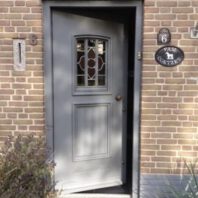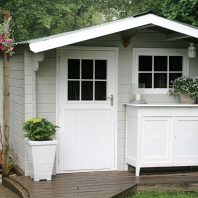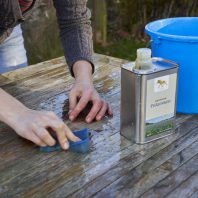Painting a wooden house | sustainable & low-maintainance
Painting a house is a quick some work – to put it mildly. Therefore you require a paint or stain that is not only great-looking and cost-effective, but also easy to maintain. Moose Färg paint is excellent for painting your wooden house, for example your Swedish cabin or Scandinavian chalet. You also give your wooden facades and paneling a fantastic matte appearance with the original Swedish paint.
- Ideal for all wooden surfaces: impregnated wood, red cedar, pine, spruce, larch and Douglas fir.
- Suitable for planed wood and rough sawn wood.
- Vapor permeable paint that allows the wood to breathe.
- Easy maintenance; sanding is not necessary in the meantime.
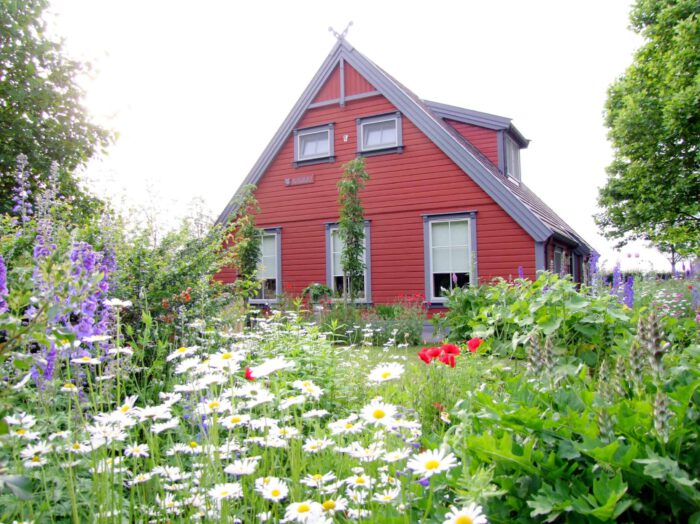
Painting a wooden house?
Painting a wooden house or facade
Wood has always been a popular building material. It radiates a natural look and has pleasant properties. In Sweden, houses in the outlying areas are actually built with wood by default – often from the local spruce or pine. It is an environmentally friendly building material and ensures a pleasant living environment due to its breathable nature. If suitable wood protection products are used, wood is also very maintenance-friendly.
For this reason, it is also often used in the Netherlands for chalets, holiday homes and homes in wooded areas. Parts of homes – such as a facade or extension – can also be practical and very attractive.
It is important to properly protect wood in the Netherlands. Certainly against mold growth, UV radiation, moisture and other weather influences. It is very wise to use a breathable paint system for this. Wood shrinks and expands due to moisture differences. A classic painting system will crack and peel under these circumstances. A moisture-regulating paint like Moose F does not have this problem.
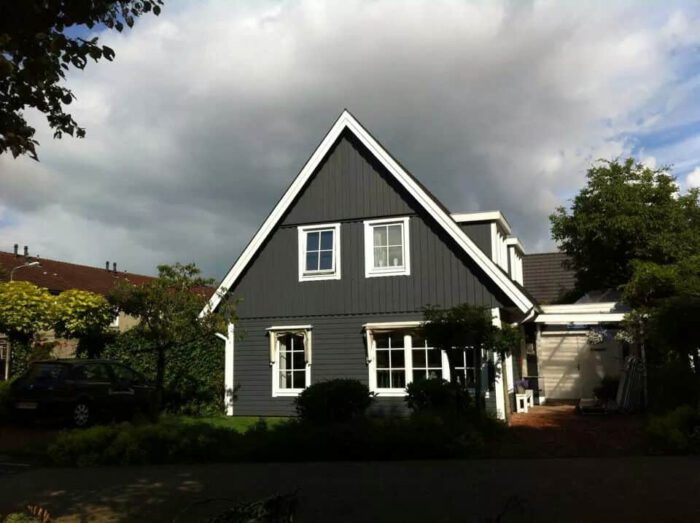
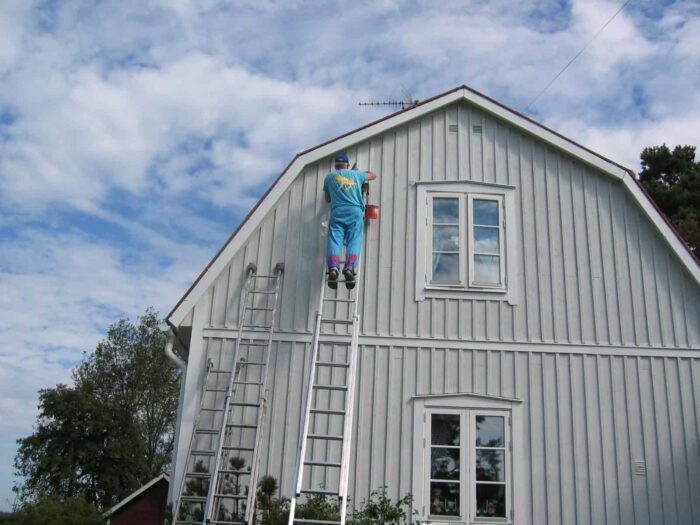
Step by step plan: painting a wooden house
Tips and tricks for painting
Although painting with Moose F is very easy, it is good to “know” your wood. Wood types have different properties and previous treatment can also affect the adhesion of a new coat of paint. We provide pre-painting advice below for good adhesion. You can always contact us for any additional advice.
- Give new wood time to settle down
An important condition for painting a house is that the wooden surface is in good condition. The moisture content in wood is crucial in this respect. A moisture content of 17% is ideal. It is important to avoid painting wood that has had a high moisture content for a long period of time or wood where the core is not yet well balanced with the surface. On the other hand, if wood is too dry, the paint will absorb too much and fill up too much pore space.
Before painting a wooden house made of new wood, it is wise to give the wood time to breathe and “settle”. Sometimes this is already done at the supplier, but not always. - Cleaning the wooden surface
Cleaning the surface is very important because of fungi. You can do this, for example, with a high-pressure sprayer and wood soap Polarsken. The wood must also be well degreased.
- Painting a disassembled house
If you still have to assemble the wooden house, it is wise to first paint the tongue and groove and possibly put a first thin layer on the wood. This prevents shrinkage and expansion seams and also preserves the tongue and groove.
Tip: Don’t forget to rub the nails with linseed oil. This prevents rusting and moisture penetration, even if you work with stainless steel nails. Especially if you don’t hammer the nails but use a nail gun. Nail guns make a bigger hole and you’ve got to fill that space! - Painting an old wooden house
It is no problem at all if a house is on the older side. The wood must be free of mold and dirt (also inspect for black dots). Clean things well and remove dead wood cells. This can be done, for example, with a high-pressure hose.
- Painting a house that has been previously painted or stained
The pre-treatment depends on the condition of the substrate. It is very important that the surface cannot peel, does not shine and is clean. If the paint on it can start to peel, you must first remove it. Roughly sanded paint residues that are firmly attached are no problem, Moose F is an opaque paint so you can no longer see them after painting.
Is the paint not flaking, but is the wood or old paint shiny? Then sand well with grit 80 so that the paint can better reach the pores of the wood. Old lacquer must be sanded off completely. - Treat with an anti-fungal agent
If necessary, treat with an anti-fungal agent.
- Apply the paint
Easy to apply with a brush, roller or spray gun. Thin the paint when using a paint sprayer, how much depends on the nozzle. Make sure that you do not spray into, for example, the insulation.
Usually two coats of Moose F are sufficient for an opaque result. For lighter colors – such as white – you will need three coats. Sanding between the layers is not necessary, and even undesirable. - Maintenance
For cleaning simply use a brush and some wood soap. You do not need to sand to touch up the paint. Clean the wood and apply a new layer, resulting in even more years of living pleasure.
Repainting an already painted house
Painting a previously painted house? If an old coat of paint is still present, Moose RDM is a better choice. This applies to window frames, but also to paneling in a heavy high-gloss paint. The often heard rumor that water-based paint is not applicable over solvent-based paint is not correct. For the most part, RDM can be used well, provided that the pre-treatment is done properly (rough sanding, cleaning without grease and allowing the 1st layer to dry thoroughly). However, it is particularly important to sand through to the base layer!
Painting window frames with Moose RDM
Moose RDM is also very suitable for painting window frames. The paint is a so-called ‘high solid’ paint, which is better for hard and smooth surfaces. The paint has a very high covering power and is very environmentally friendly. Moose RDM needs to have a foundation though. This can be done with a layer of Moose F. Contact us for further advice.
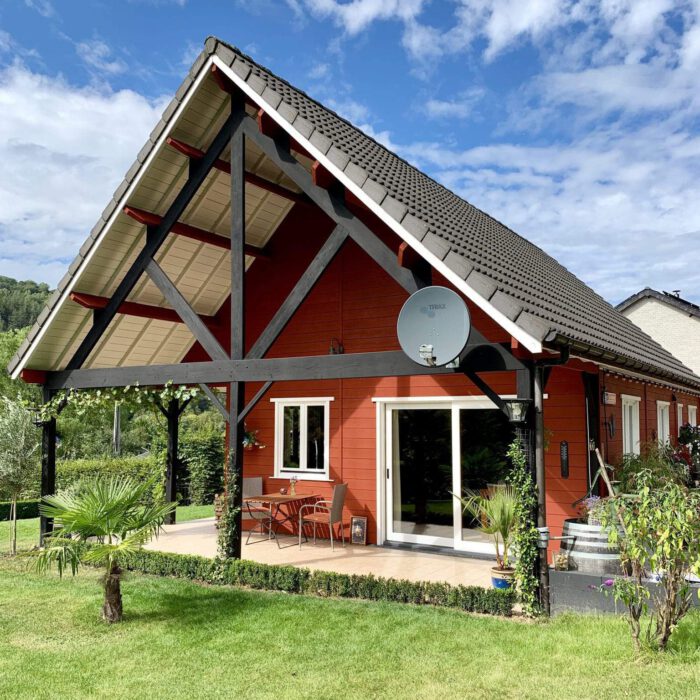
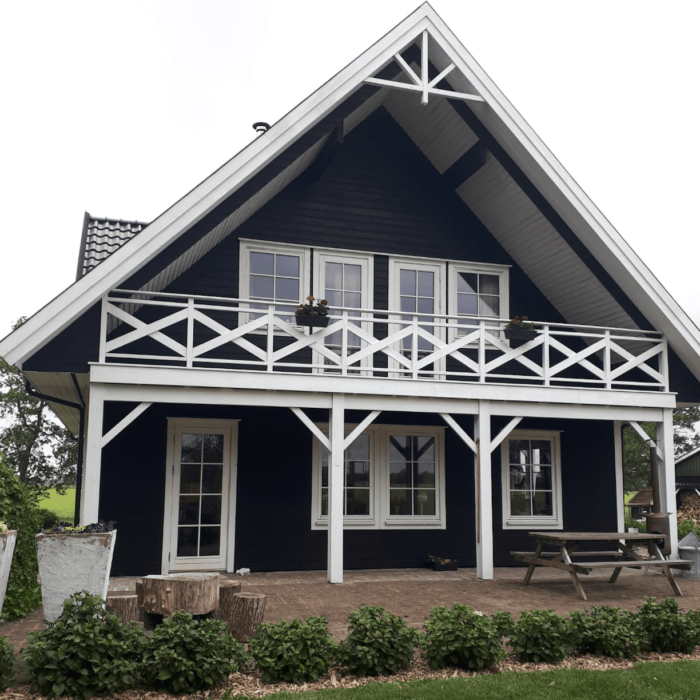
Painting a wooden house: possibly treat against the weather (mold)
Sometimes you can choose to use an antifungal primer. Ask for advice.
Paint the first layer diluted with water (approx. 10%) with a block brush so that you can get into the cracks and holes. Apply the second layer when the first layer has dried thoroughly. With painted wood this can take a day, but with a nice sunny day this can be as little as 2 hours. You will notice it yourself; when the second layer dissolves the first, then you have to wait a little longer. Primer is not necessary, Moose Färg is its own ground.
Do not sand between the layers, that is not necessary and even undesirable.
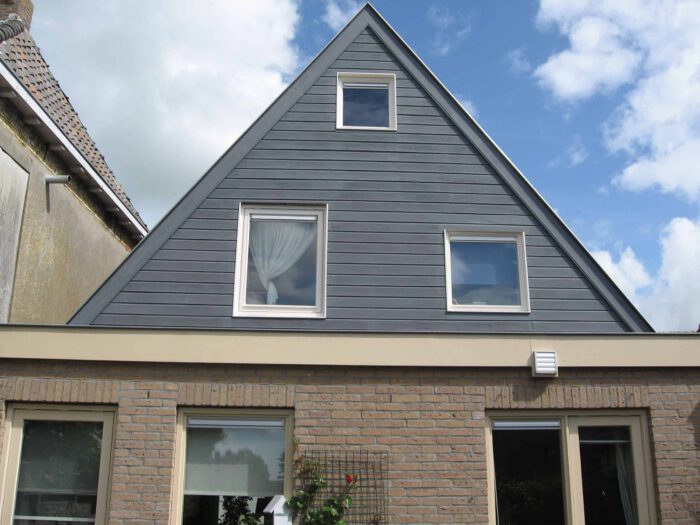
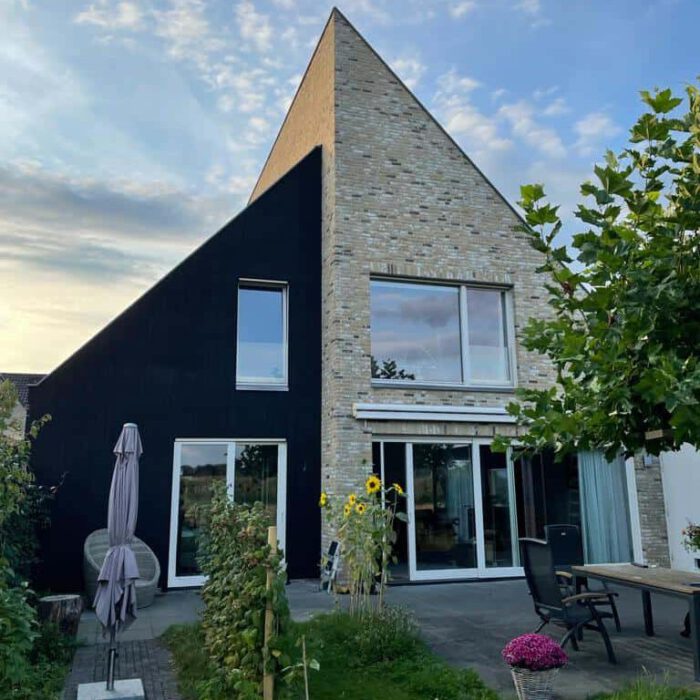
Wood too dry or too wet
If it has been very hot and dry, it may be wise to moisten the wood slightly before painting. If the wood is too fresh, there is still too much moisture in the wood. Ideal is air-dry, 17.9% moisture. Fresh wood bleeds and the juices can seep through the paint. Which isn’t a big problem, because you can paint over it again afterwards.
Check the paintwork at the end of the season or after the winter. The paint really absorbs into the surface and you may not have hit all spots equally well. You can then touch up or brush over completely, which won’t be visible afterwards. This will ensure an optimal result for the years to come.
Would you like to paint a wooden house in your own color? Then you can also choose your own color with a RAL or NCS code under ‘customer color‘.
Note: keep in mind that colors may look different due to certain computer settings (e.g. brightness). If you would like to get a good look at the colors in real life, you can apply here for our free color-card. All colors on this card are painted by hand.
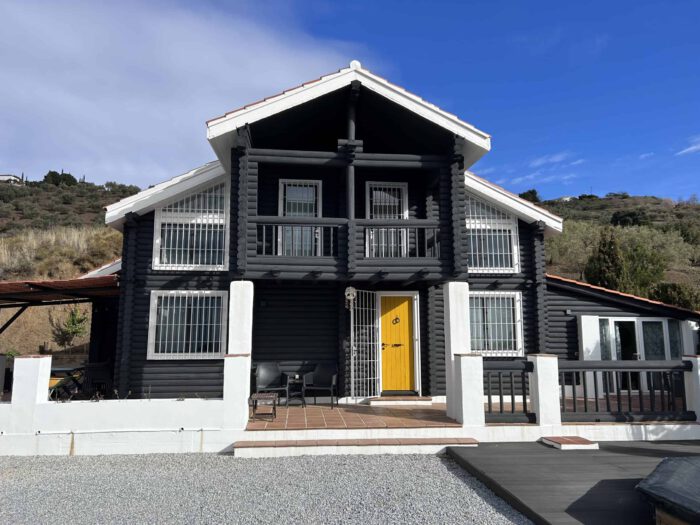
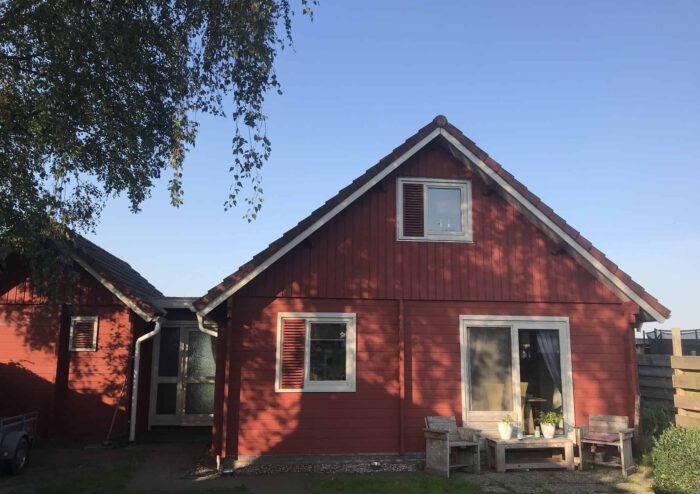
FAQ: Painting a wooden house
This depends on various factors, such as the condition of the wood, the quality of the paint and the weather conditions to which the house is exposed (e.g. strong sunlight). Moose F paint absorbs into the wood like a stain, allowing the wood to breathe permanently. As a result, the chance of peeling (with the correct pre-processing) is close to zero. After a few years, the paint may start to fade, but then cleaning and repainting once is enough for a few more years of living pleasure. The side of the house that is in the bright sun is more likely to fade.
Would you like additional, personal advice?
We are happy to help. Send an e-mail or call +31(0) 6 55 333 165. Watch our Instruction Video for more information. Apply here for a free color-card.


